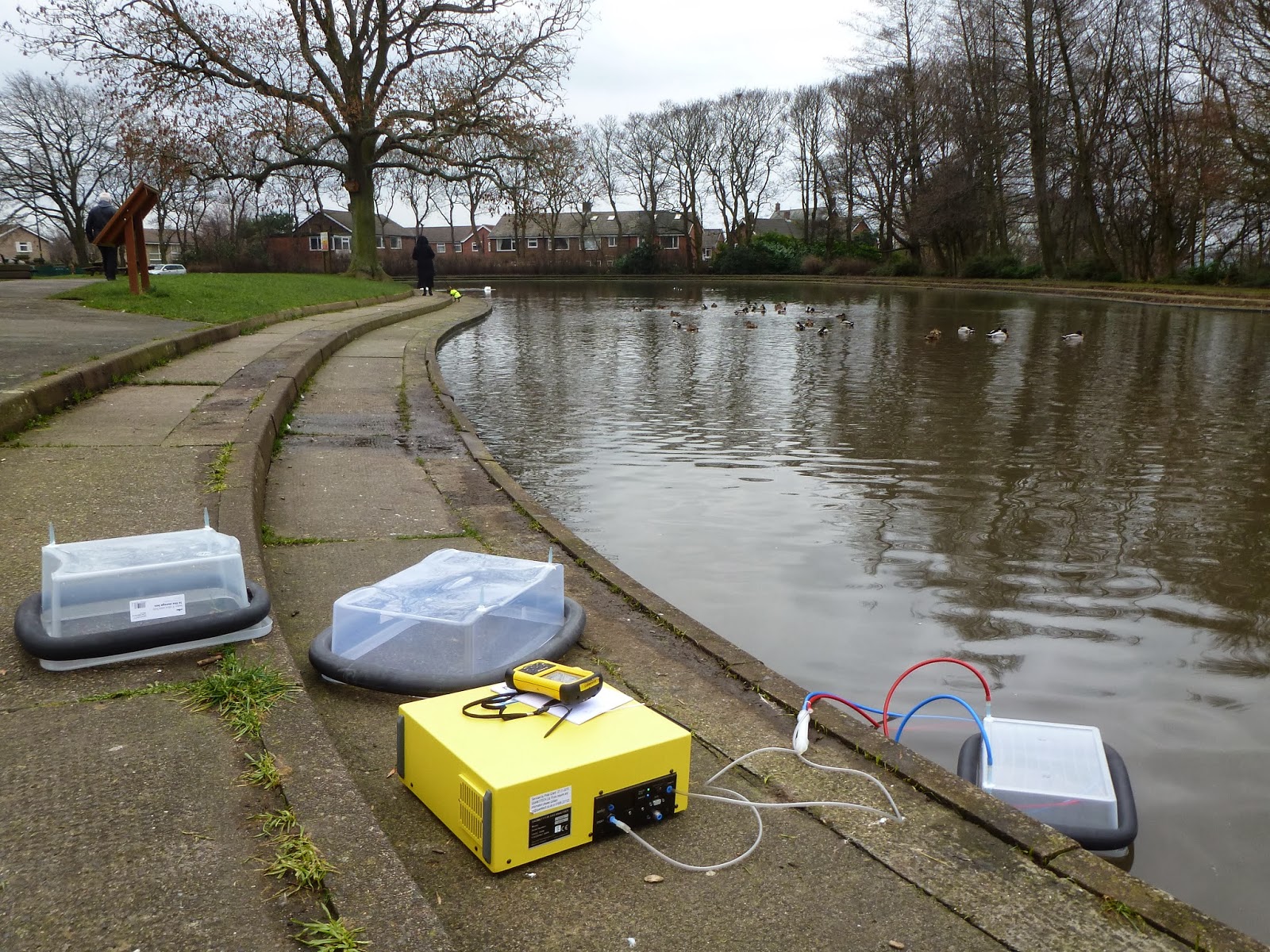 |
| Trialing the experimental design at Freeman's boating pond. |
 |
| Graph showing the increase of CO2 and CH4 in a floating chamber on the boating pond shown above. (starting levels are normal atmospheric levels) |
Crucial to understanding the carbon cycle within small aquatic systems is knowing just how much gas is being released from these systems. Just as the vegetation growth traps organic carbon within these systems, so too does it's decay release this carbon back to the atmosphere, and ultimately dictates whether a system is a sink or a source of organic carbon. This is to be one of the key the focuses of our research in 2014 hoping to track the seasonal fluxes of gas from the ponds along Druridge Bay.
 |
| Trying out the kit on one of the small ponds up at Hauxley nature reserve. |
Currently we are trying to establish a robust technique that we will be able to use throughout the year. The big yellow box in the photos is a FTIR (Fourier Transform Infrared Spectroscopy) gas analyzer. Essentially it measures the levels of different gasses in the air by shining a beam of light at a sample and measuring how much of the light is absorbed. While I would disagree with the manufacturer's description of 'lightweight' it is certainly portable and allows us to measure the gasses given of by ponds directly in the field. The floating chambers collect the gasses which are given off (or absorbed) by the water and is pumped into the gas analyzer, and back into the chamber. Measuring the changes in concentrations of CO2 and CH4 over a 20 minute period allow us to calculate the release rates of the gasses. While this experiment is still in it's design stage the graph clearly shows a substantial increase in the levels of CO2 and CH4 within the floating chambers.

That gas machine sure looks expensive. Wouldn't want to break it.
ReplyDelete